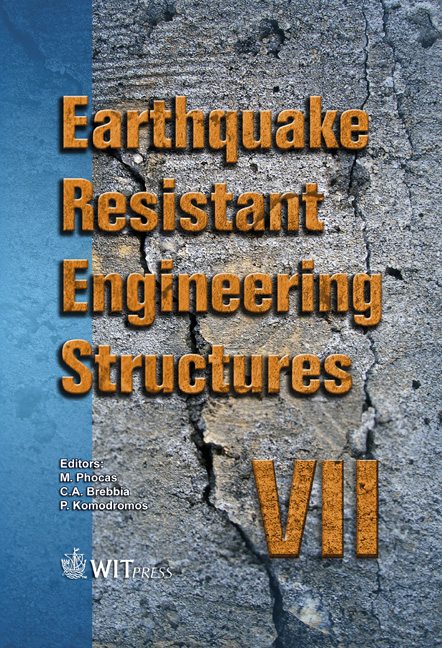Seismic Technique To Determine The Allowable Bearing Pressure In Soils And Rocks
Price
Free (open access)
Transaction
Volume
104
Pages
11
Page Range
253 - 263
Published
2009
Size
442 kb
Paper DOI
10.2495/ERES090231
Copyright
WIT Press
Author(s)
S. S. Tezcan, Z. Ozdemir & A. Keceli
Abstract
Based on a variety of case histories of site investigations, including extensive bore hole data, laboratory testing and geophysical prospecting, an empirical formulation is proposed for the rapid determination of the allowable bearing capacity of shallow foundations. The proposed expression corroborates consistently with the results of the classical theory and is proven to be rapid, reliable and safe. It consists of only two soil parameters, namely the in situ measured shear wave velocity, and the unit weight. The unit weight may also be determined, with sufficient accuracy, by means of another empirical expression, using the P-wave velocity. It is indicated that once the shear and P-wave velocities are measured in situ by an appropriate geophysical survey, the allowable bearing pressure, as well as the coefficient of subgrade reaction and many other elasticity parameters, may be determined rapidly and reliably. Keywords: bearing capacity, shear wave velocity, shallow foundations, allowable bearing pressure, seismic technique. 1 Introduction Professor Schulze [1], a prominent historical figure in soil mechanics and foundation engineering in Germany, stated that \“For the determination of allowable bearing pressure, the geophysical methods, utilising seismic wave velocity measuring techniques with absolutely no disturbance of natural site conditions, may yield relatively more realistic results than those of the geotechnical methods, which are based primarily on bore hole data and laboratory testing of so-called undisturbed soil samples”.
Keywords
bearing capacity, shear wave velocity, shallow foundations,allowable bearing pressure, seismic technique.





